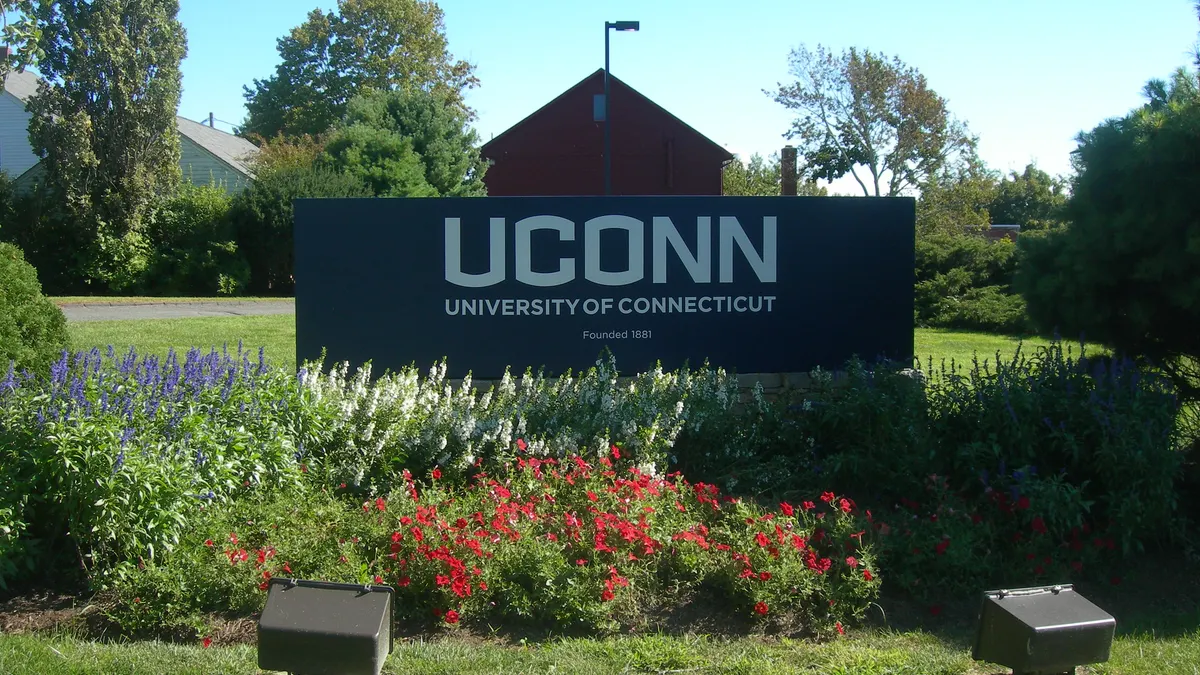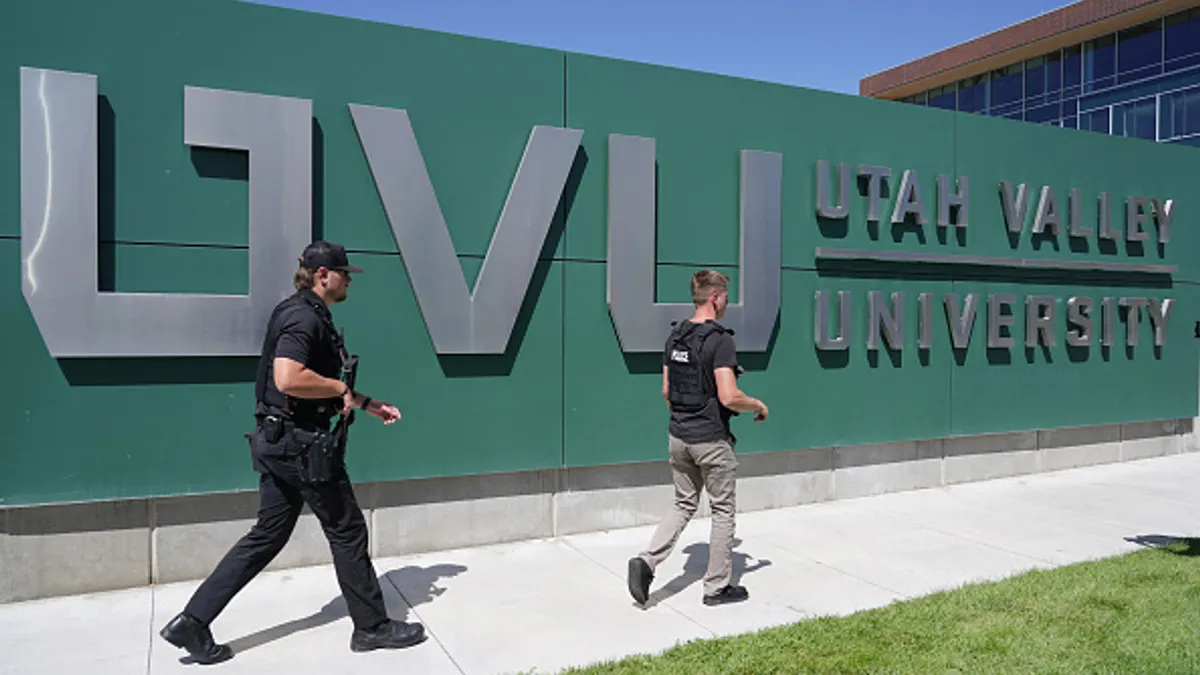Beryl McEwen, North Carolina A&T State University’s new interim provost, rode the traditional path from faculty member to department head to provost.
“I don’t see myself as any more qualified” than any of the other members of the faculty, she said, acknowledging her belief that the university’s chancellor, Harold Martin, could have tapped anyone else from the faculty to lead its academic endeavors.
As such, McEwen told a group of faculty members, deans and other provosts assembled on campus last week that she makes a concerted effort to “walk carefully and try to establish good relationships with people” in her new role. Being promoted at an institution where she had served as a faculty member for a number of years carried with it the idea that “people know you,” which sometimes comes with expectations of favors, exceptions and special treatment from those with whom she once worked closely.
McEwen advises leaders who find themselves in similar situations to “be strong enough to say no when the answer is no. Ask people to think about things differently.” And when difficult conversations have to be had, “we try to have them in a respectful way,” she said. Ultimately, though, “we have a business to run,” and the feelings of individuals can’t overtake the good of the university.
Perhaps the biggest thing McEwen has learned, she said, is that innovation and a willingness to fail go hand-in-hand.
“I used to believe that I had to get everything right the first time. I believed that for a very long time; I used to say ‘failure is not an option,’” McEwen said. She quickly learned that if you are going to be innovative in your position, you must not fear failure. And when it comes, “we must not wallow or feel sorry for ourselves,” but move on and learn the lessons of failure.
Realizing that small victories count too helps McEwen to not be so focused on the macro success that she misses opportunities to make a difference on a micro level. “It’s not always the huge thing that you need to do, but every time there is something you need to do, you need to do it well,” she said, adding that she embraces a strategy of planting a flag on every tiny hill she encounters along the way.
“You do the best job you can, the best work you can with the job you have — I’m never looking ahead to the next job [title],” she said, emphasizing a need to stay focused and grounded in the current position and allow advancement opportunities to open up on their own. “I can only do one job at a time.”
McEwen’s broad advice came during a residency for the inaugural cohort of the Center for Advancing STEM Leadership — a collaboration between Fielding Graduate University, the Association of American Colleges and Universities, North Carolina A&T State University and the University of the Virgin Islands designed to increase representation in competitive fields with direct ties to the workforce. But many of the takeaways of the weekend weren’t focused solely on STEM — they were focused on cultivating leadership skills that are more broadly applicable to leaders on college campuses across the country.
Taking strategic steps forward
Angela Peters, vice provost for academic programs at Claflin University, spoke more tangibly about how her institution embarked on a re-imagining of higher education to meet President Henry Tisdale’s vision of transforming Claflin into a leading 21st century institution of higher learning.
First, she said, the concepts of “value proposition” and a “business model” on campus had always been assumed, but weren’t really discussed with any level of specificity until the last five years. As the institution set out to re-imagine what higher education looks like, officials realized “there is no guarantee that traditional structures and modes of operation will be the ones that thrive in the future,” said Peters.
They commissioned numerous population and feasibility studies to determine which way to go. One of the revelations that came from this effort was the notion that the average student today is coming to Claflin’s campus with four personal devices they’re connecting to the university’s wifi. Very practically, they realized that to provide a new model for a highly connected student, they needed to “ramp up how we incorporate technology in the classroom” and ramp up how their approach to IT from a central office standpoint to figure out how to accommodate that.
For example, they visited Jackson State University in Mississippi to learn see how JSU’s iPad initiative — which saves students hundreds per semester on textbooks, among other benefits — could be scaled at Claflin. When they returned home and attempted to deploy the iPads on the South Carolina campus, they quickly realized they didn’t have the IT infrastructure to support such an initiative, and set out to address the network issues and build a stronger infrastructure, realizing it was critical to serving students, even those with their own devices.
But updating the campus approach to technology requires getting full-campus buy-in. “When you’re bringing in new technology, and when Professor XYZ is not even willing to download the newest versions of Word onto their computers,” it can be difficult to implement institutional transformation, Peters said.
One way is by incorporating technology, as well as specific research focuses and any other reforms on campus into the institution’s strategic plan.
“If it’s not in the strategic plan, we are not even looking into it,” Peters said. And faculty members have a voice in the development of the plan — in fact, she said, “faculty are included in every single thing that we do.”
Claflin is also taking other steps to show faculty members they’re valued and appreciated. On the slate of studies the university commissioned was a faculty compensation study to compare Claflin to peer and aspirant institutions and ensure instructors are being compensated fairly. Likewise, the institution instructed all deans and academic leaders to identify “centers of excellence” that the university’s administration is committed to supporting.
“If your [academic] plan is tied to your strategic plan and your mission, then your president has a plan for putting it in the budget,” she said. Each department chair prepares five-year academic master plans, and there is a constant assessment and review of the plans to make sure departments are meeting their targets.
Most importantly, departments — both academic and administrative — are pushed to embrace the idea that they cannot afford to “work in silos,” Peters said, noting, “it’s the entire university’s success that you’re banking on.”
‘A certain level of personhood’
Norman Anderson, assistant vice president for research and academic affairs at Florida State University and a former president of the American Psychological Association, said “there’s a certain level of personhood you have to bring to leadership.”
Eugene DeLoatch, dean emeritus of Morgan State University’s school of engineering and a former president of the American Society of Engineering Education, noted this very idea of being “in touch with humanity somehow” was central to his success over the years.
As a dean of engineering, DeLoatch said he is accustomed to “borrowing” from and collaborating with other disciplines — after all, he said, engineering is a combination of biological, chemical and physical sciences, math and a sprinkle of social science. This same concept was one he fully embraced in leadership.
“Leadership is about trying to figure out how you can scavenge, how you can unite, how you can create to further the business,” he said.
Seeking collective impact, networking across departments and administrative functions and seeking strategic partnerships, breaking the idea of “this ownership mentality at our individual institutions” in which every leader wants to own his or her space have all been important keys.
DeLoatch emphasized the importance of “team-building — it’s about sensing and getting the best that you can from every person on the team,” he said. “Collective impact is how you transform a community, transform an institution, transform a nation.”

















